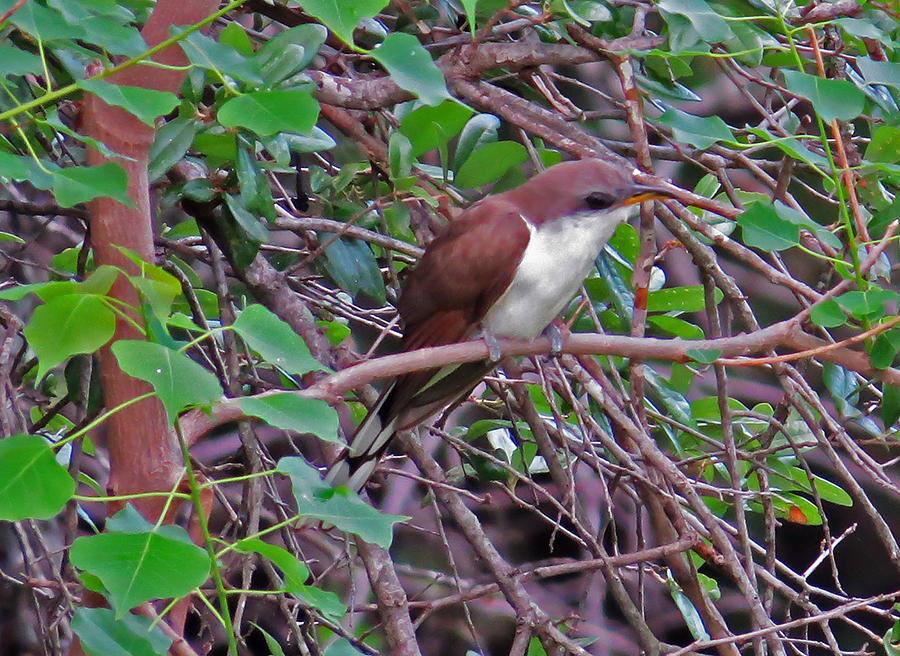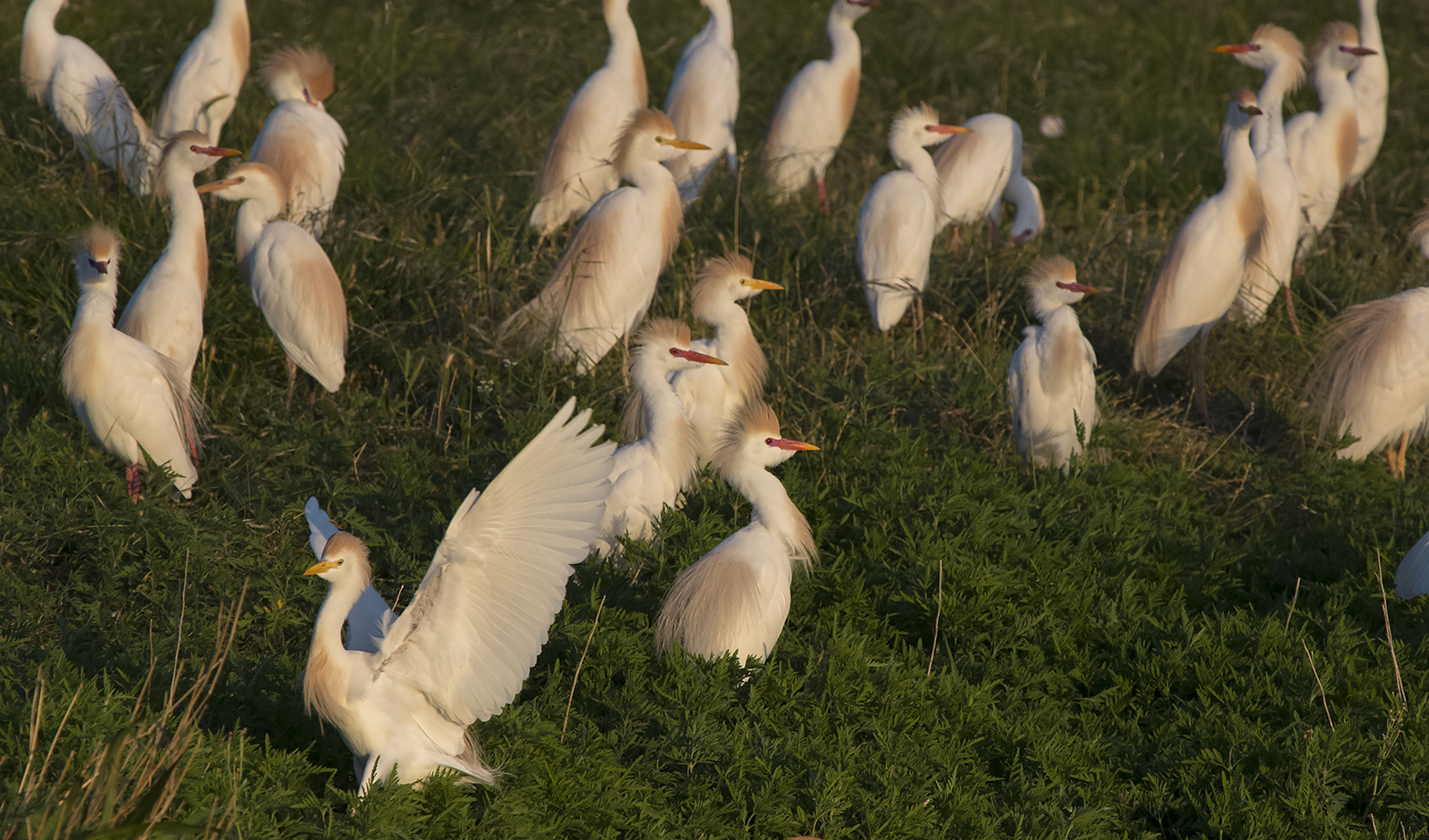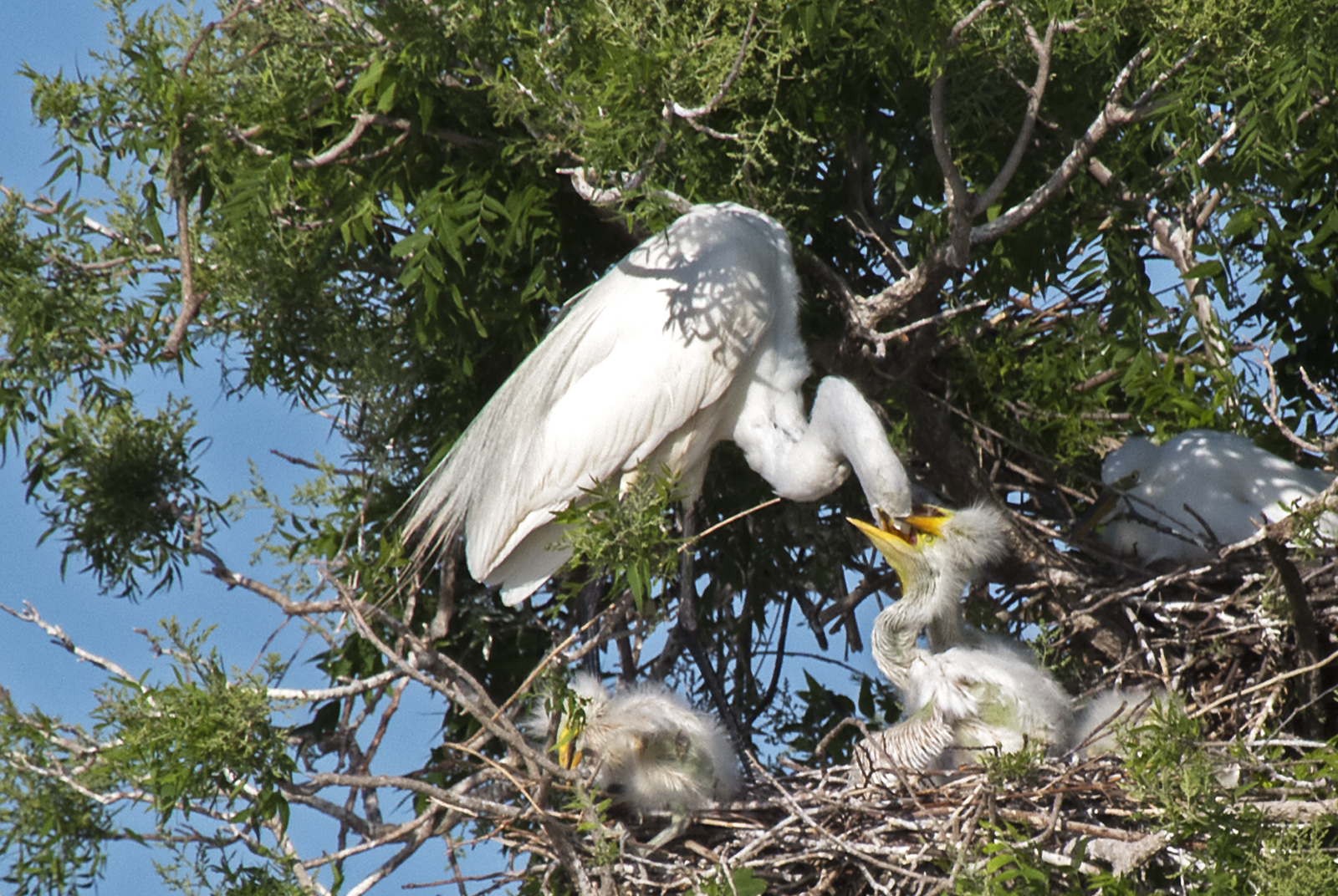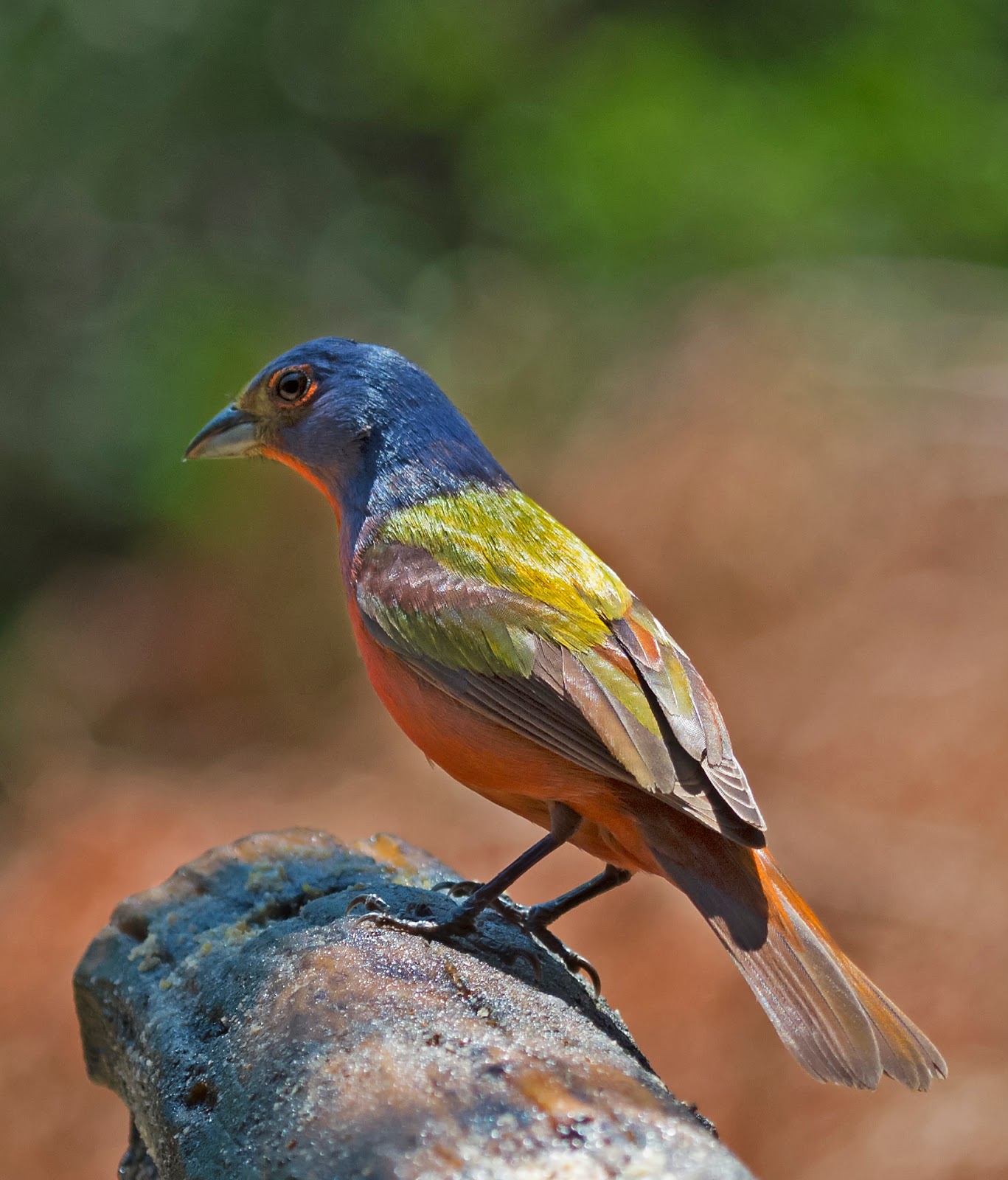Late this morning, we drove down to the
Hornsby Bend Biosolids Management Plant in Southeast Austin. This location is popular for area birders; it is also known as the
Hornsby Bend Bird Observatory which sounds a lot more palatable. We saw almost no water birds on the ponds this late in the season. The trails along the river had quite a bit of activity, but the migratory species have all passed through.
White-eyed Vireo - After our Lake Georgetown hike last weekend, where we thought we identified a
White-eyed Vireo based on the call and a brief glimpse, this vireo has become our "bird of the week." All week, we have recognized the call along our evening walk along the San Gabriel River, but the birds are hard to find as they move fast and stay hidden in the brush. Yesterday, we positively identified a pair in the bushes along the trail, seeing the two white wing bars and the stunning white iris and yellow spectacles. Otherwise, a nondescript bird.
As soon as I heard them at
Hornsby Bend, my mission was to get a recognizable picture -- and I succeeded! I still find the stark white iris hypnotizing.
 |
| White-eyed Vireo - Canon EF 100-400mm f/4.5-5.6L - 400mm, f/5.6, 1/500sec, ISO-800 |
 |
| White-eyed Vireo - Canon EF 100-400mm f/4.5-5.6L - 400mm, f/10, 1/80sec, ISO-800 ( Flash ) |
In all, we were able to identify the following birds:
- EUST - European Starlings - several around the parking lot
- STFC - Scissor-tailed Flycatcher - numerous perched on power lines
- NOCA - Northern Cardinal - every-present and numerous
- PABU - Painted Bunting - saw two females near bird observatory, heard one male near river
- RBWO - Red-bellied Woodpecker - saw and heard several of these
- CACH - Carolina Chickadee
- BCTI - Black-crested Titmouse - chattering in the trees with the chickadees
- EAPH - Eastern Phoebe - found two of these in the sultry Aquatic Greenhouse
- RSHA - Red-shouldered Hawk - hanging around an the Aquatic Greenhouse and flew through once
- YBCU - Yellow-billed Cuckoo - heard several times and saw one fly across the road.
- TUVU - Turkey Vulture - only a one of these
- BHCO - Brown-headed Cowbird - saw pair of females and, later, one male singing at top of tree.
- BLJA - Blue Jay - followed the call and caught a glimpse in bushes
- WEVI - White-eyed Vireo - hard to find in foliage
- SUTA - Summer Tanager - probable identification of call but no visual
At noon, we took a break and had a picnic sandwich at the truck. After lunch, we braved the heat and made another pass along the trails. Except for the ever-present Cardinals, the bird life had quieted down.
Dragonflies - We ran into another photographer, Eric Isley, who introduced us to dragonflies, showing us on his camera some of the different species we might find and pointing out field marks. Just like birds ... only they pose better and don't disappear during the warmth of afternoon.
After we got home, we trolled the internet looking for reference materials on dragonflies. We found a site called
Odonata Central and searched for a list of species for
Travis County. Though the site is very slow, it does have some good field notes on the various species.
The most common type we saw was the
Widow Skimmer, which shows yellow stripes down the two sides of the abdomen joining on the thorax. These are obscured in mature males, which look powder blue. Males have white patches on the wings while females do not. We think we have a picture of a female and an immature male.
 |
| Female Widow Skimmer - Canon EF 100-400mm f/4.5-5.6L - 400mm, f/7.1, 1/400 sec, ISO-800 |
 |
| Female Widow Skimmer - Canon EF 100-400mm f/4.5-5.6L - 400mm, f/7.1, 1/640sec, ISO-800 |
 |
| Male Widow Skimmer - Canon SX-50 HS - 215mm, f/6.5, 1/160 sec, ISO-250 (Danielle Plumer) |
The next dragonfly is, we think, a
Royal River Cruiser based on the small break in the yellow band around the second segment. To quote a description at
Austin Bug Collection:
To distinguish this species from others, note that the yellow ring at the base of the abdomen is broken at the top, the front shoulder stripes only reach partway up the thorax, and the abdominal spots are rather small.
 |
| Royal River Cruiser - Canon EF 100-400mm f/4.5-5.6L - 210mm, f/7.1, 1/320 sec, ISO-800 |
This final dragonfly is unquestionably a
Comet Darner, showing the green thorax and brick red abdomen. It is quite a sight and, apparently, not very common. Many thanks to Eric for pointing this out to us!
 |
| Comet Darner - Canon EF 100-400mm f/4.5-5.6L - 400mm, f/6.3, 1/800 sec, ISO-800 |
 |
| Comet Darner - Canon SX-50 HS - 215mm, f/6.5, 1/160 sec, ISO-200 (Danielle Plumer) |
Update 2014-06-08 - Have seen a few of what I think are juvenile WEVI on our evening walk. Identical to adults photographed above but the iris is still black.

































